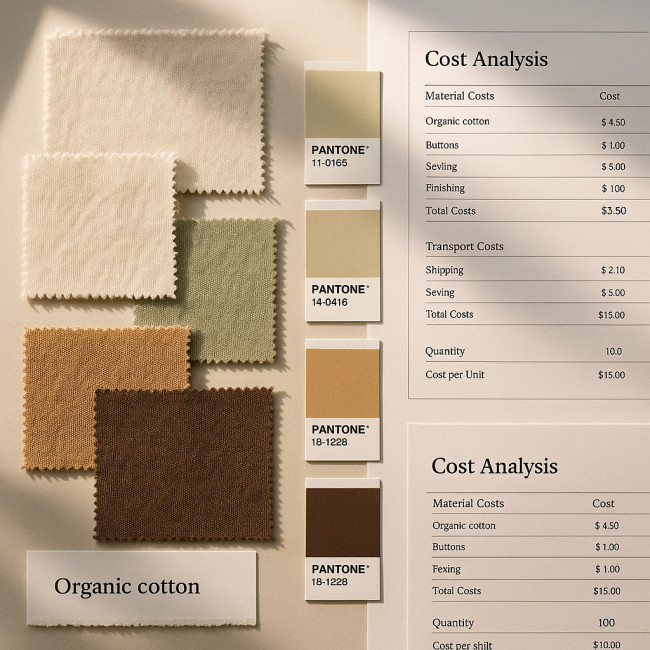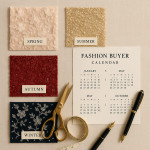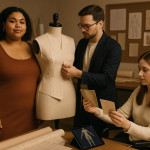Sourcing a couturier for eco textiles: verify green claims before hiring
Eco-conscious fashion buyers are under pressure to find couturiers who truly work with sustainable fabrics. This guide walks you through a rigorous yet practical vetting process to confirm each green claim—before you sign a contract or cut a first swatch.
Why eco textiles matter to your brand reputation
Consumers no longer tolerate vague sustainability statements. A single mislabeled fabric can spark social-media outrage, damage trust and sink sales. Partnering with a couturier who masters eco textiles safeguards your supply chain, helps you meet ESG goals and unlocks premium pricing opportunities.
Key business wins
- Risk mitigation : verified low-impact fabrics reduce non-compliance fines and recall costs.
- Marketing edge : authentic certifications generate credible storytelling.
- Investor appeal : traceable sourcing aligns with rising environmental reporting standards.
Step-by-step verification workflow
1. Pre-screen certifications—not just buzzwords
Ask for third-party certificates such as GOTS, Fairtrade Textile Standard, FSC (for cellulosic fibres) or OEKO-TEX® Standard 100. Cross-check serial numbers on the issuer's public database. If the couturier supplies custom fabrics, request the original mill's certificate copies.
2. Trace fibre origin back to the farm or recycler
Sustainability starts long before weaving. Demand a chain-of-custody document that tracks fibres from farm, forest or recycling facility to weaving. Many couturiers now embed QR codes in swatch cards, linking directly to batch data on a craft designer directory profile.
3. Audit dyeing and finishing processes
Low-impact fibres can lose their edge if coatings involve heavy metals or excess water. Review wastewater analysis, chemical inventories and energy reports for each dye house involved. Schedule a virtual walk-through or send a third-party auditor.
4. Evaluate social and safety standards
Eco textiles should also respect people. Confirm the couturier's workshop complies with ILO conventions, offers protective equipment and pays living wages. Ask for SA8000, Fair Wear or equivalent audits.
5. Run lab tests on random swatches
Independent labs can verify fibre composition, chemical residue limits and colour-fastness. Build a testing clause into your sourcing contract so you can reject lots that fail.
Comparison table: popular eco-textile certifications
| Label | Main Focus | Verification Complexity | Ideal Use Case |
|---|---|---|---|
| GOTS | Organic fibre + social criteria | High (annual onsite audits) | Premium ready-to-wear |
| OEKO-TEX Standard 100 | Chemical safety | Medium (lab testing) | Lining, trims, accessories |
| Fairtrade Textile Standard | Worker welfare | High (multi-site audits) | Casual basics, loungewear |
| FSC | Sustainable forestry | Medium | Viscose, lyocell fabrics |
Cost implications—and how to budget smart

Verified eco textiles can cost 5-30 % more than conventional fabrics. Yet total garment costs often rise by only 2-10 % once production efficiencies and reduced waste are factored in. Negotiate volume discounts and explore deadstock rescue programs to balance budgets. Remember to compare landed cost rather than raw meter price; accounting for fewer defect returns, longer shelf life, and higher basket value usually offsets the initial premium. Budget models that integrate carbon pricing scenarios can also reveal future savings and shield your margin against forthcoming environmental regulations.
Hidden savings
- Lower return rates : higher quality cuts alteration costs.
- Tax incentives : many regions grant credits for certified sustainable materials.
- Shorter marketing cycles : clear eco claims slash legal review time.
Red-flag signals during vetting
- Certificates older than 12 months.
- Supplier refuses third-party lab testing.
- Carbon footprint data missing Scope 3 emissions.
- No mention of end-of-life or recycling pathways.
Digital tools that accelerate verification
Blockchain-backed traceability apps, live smart-label feeds and AI-powered material scans are turning weeks of paperwork into instant QR-code checks. For rapid shortlisting, explore sustainable clothing designer directories that pre-filter profiles by certification.
Case study: 14-day green due diligence sprint
A Paris accessories brand needed a couture partner for an eco capsule line on a tight schedule. By combining directory filters, quick certification cross-checks, and two express lab tests, they secured a GOTS-compliant couturier in just two weeks—saving an estimated €18,000 in potential relabeling costs. They also referenced freelance designer vetting criteria to streamline interviews.
Tech clauses to include in your contract
- Real-time traceability feed : API access to material batch data.
- Testing contingency : supplier bears cost of failed lab retests.
- Disclosure window : 48-hour notice of any certification lapse.
- End-of-life take-back : couturier supports recycling program for offcuts.
Quick quiz: are you ready to vet a green couturier ?
FAQ
- Can a small-scale couturier afford eco-textile certifications ?
- Yes. Many certification bodies offer tiered pricing for workshops under a certain turnover. Shared audits across multiple micro-suppliers also cut costs.
- Is deadstock fabric considered sustainable ?
- Using high-quality deadstock diverts textiles from landfill and reduces virgin fibre demand. Still verify chemical safety and storage conditions.
- What if a supplier's certificate expires mid-production ?
- Include a clause that pauses production until renewal and requires written proof before resuming.
- Do recycled polyester blends qualify as eco textiles ?
- They can, provided the recycler holds certifications like GRS and the finishing complies with chemical safety standards.
- How do I communicate verified eco claims to end consumers ?
- Use QR-code swing tags linking to audit summaries, display certification logos with license numbers, and publish a sourcing story on your product page.
Take the next step
Ready to lock in a couture partner who walks the eco talk ? Download our material sourcing checklist, shortlist three verified ateliers and schedule discovery calls this week.
Action now : Send your first inquiry before Friday and position your brand at the forefront of truly sustainable luxury.











